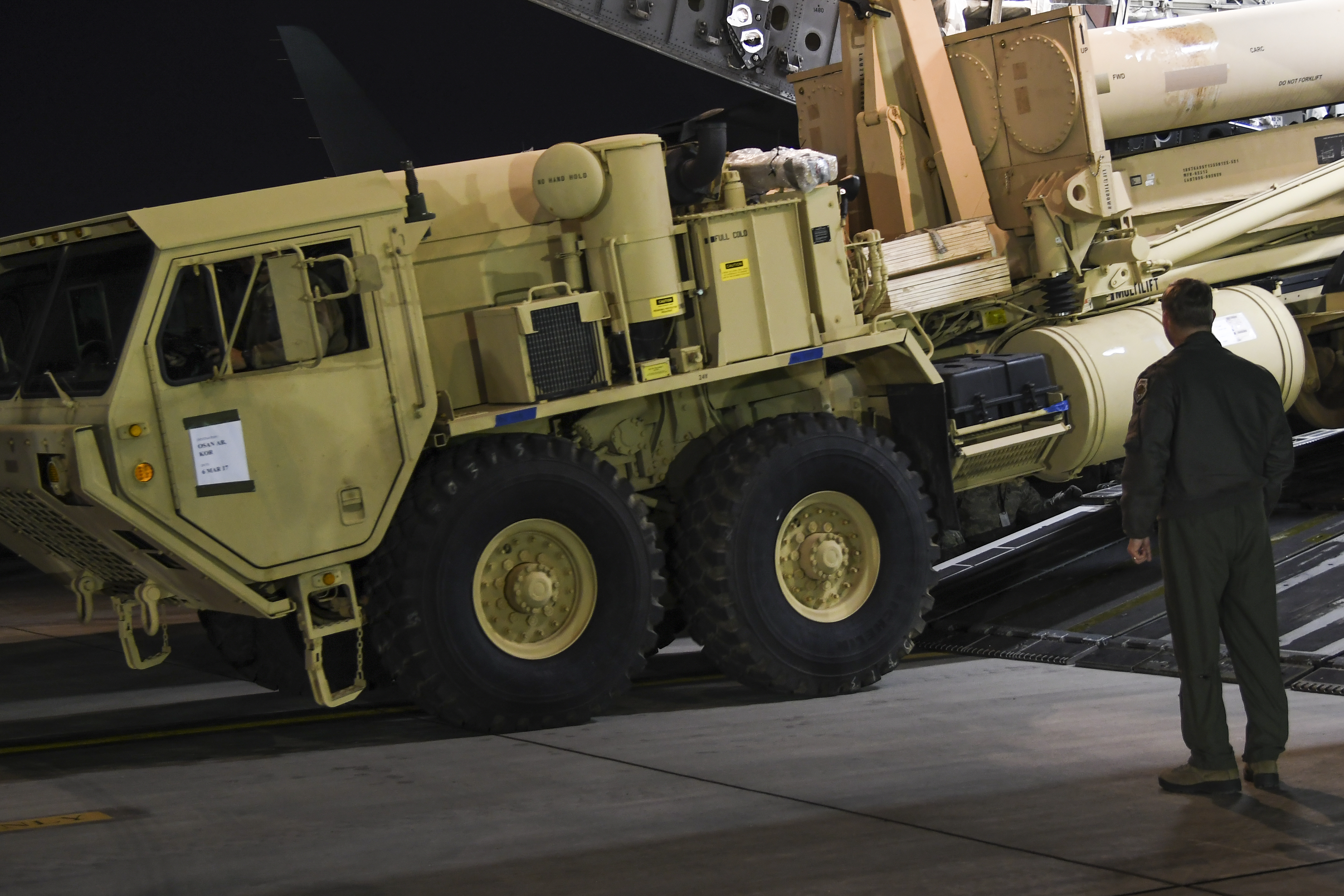
Lt. Gen. Thomas Bergeson, deputy commander of US Forces Korea, watches as a C-17 from JB Elmendorf-Richardson, Alaska, delivers the first elements of a Terminal High Altitude Area Defense system to the Korean Peninsula on March 6, 2017. Courtesy photo.
The continued nuclear tests and threats by North Korea post a “threat to all nations in the region and beyond,” the governments of both the US and South Korea said in a joint statement on Tuesday announcing regular meetings on deterrence strategy.
The US State Department said North Korea’s “dangerous and destabilizing pursuit” has pushed the US and South Korea to “regularize” the Extended Deterrence Strategy and Consultation Group for regular meetings, including one in the near future, to coordinate a “whole of our respective governments” approach to strengthening cooperation.
The group, which was created in October 2016, includes representatives from the US and South Korean defense and state departments and focuses on how to use diplomacy, information, military, and economic elements to deter North Korean aggression, according to a Pentagon readout of the group’s first meeting in December.
President Trump tweeted on Tuesday he was “allowing” Japan and South Korea to buy a “substantially increased amount of highly sophisticated military equipment” from the US, but did not expand on what that equipment could be.
South Korean officials also said Monday they were ready to install four more Terminal High Altitude Area Defense missile system launchers to complete the deployment of the system that was stalled earlier this year, according to Stars and Stripes.
The US military is sending more assets to the region in the near future to ensure that South Koreans “do not face this aggressor alone,” US Pacific Fleet Commander Adm. Scott Swift said Tuesday, according to the South Korean Yonhap news agency.
These assets include carrier strike groups, expeditionary strike groups, aegis ships, submarines, F-35s, and other aircraft, Swift said at the International Seapower Symposium in Seoul.
“Today, our platforms have longer reach, are more interconnected, and possess greater lethality than what has ever been fielded before,” Swift said, according to Yonhap.
